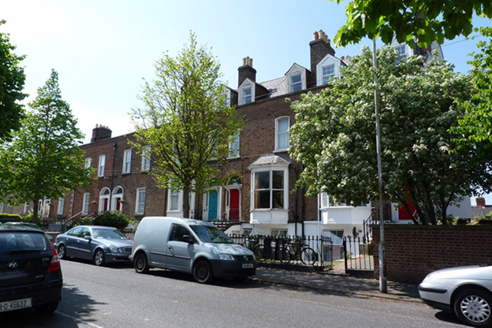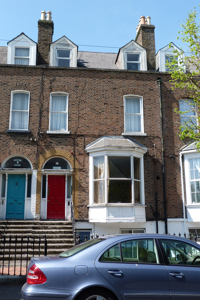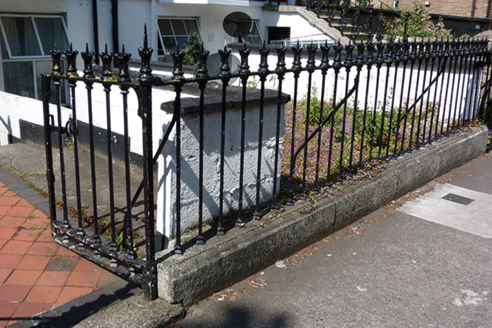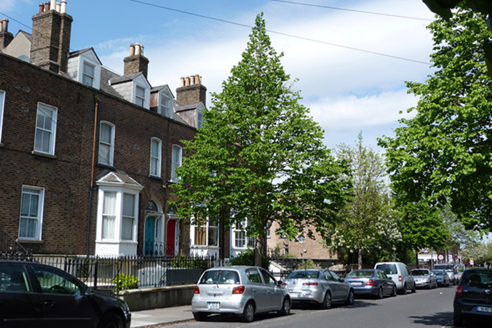Survey Data
Reg No
50110168
Rating
Regional
Categories of Special Interest
Architectural, Artistic
Original Use
House
In Use As
Apartment/flat (converted)
Date
1880 - 1900
Coordinates
315406, 232665
Date Recorded
04/05/2017
Date Updated
--/--/--
Description
Terraced two-bay two-storey with dormer attic former house over raised basement, built c. 1890, having return to rear (west) elevation and canted-bay window to front (east) elevation. Now in use as apartments. Pitched slate roof, with dormer windows and brick chimneystacks having clay pots, partially hidden brick parapet with granite coping, and cast-iron rainwater goods. Brown brick, laid in Flemish bond, to walls, having masonry plinth course over lined-and-ruled rendered wall to basement. Square-headed window openings to basement having masonry sills. canted-bay window to ground floor, having hipped slate roof, carved timber cornice, sill and timber panelled apron. Segmental-headed window openings to first floor with raised rendered reveals and masonry sills. Replacement windows throughout. Round-headed door opening having carved timber doorcase comprising pilasters, brackets and frieze, with plain glazed fanlight and sidelights, timber panelled door. Shared rendered platform and steps with decorative cast-iron handrail and post. Cast-iron railings on granite plinth wall with cast-iron pedestrian gate to front. Located on west side of Stamer Street.
Appraisal
This building retains much of its original form, and is characteristic of suburban residential development at the close of the nineteenth century. The survival of the cast-iron railings and pedestrian gate which bound the front garden area provides a sense of enclosure marking out the private space associated with the house. This building is one of three with dormer windows and large chimneystacks punctuating the roofline creating visual interest at this end of the street. Stamer Street was named for William Stamer, Lord Mayor of Dublin from 1809-1819. The closure of Portobello Gardens in 1865 and the later infilling of the Portobello Basin freed up residential development land in the area, with housing dating predominantly to the late nineteenth century. The west side of the street comprises a row of houses with similar parapet heights and fenestration patterns. Some variations in design are evident between separate house groups, possibly indicating the works of individual developers or builders.







